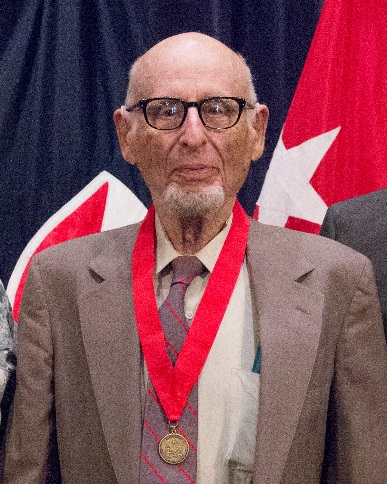Dr. Benjamin Bederson
 Despite a short Army career during World War II, Dr. Benjamin Bederson’s work on the Manhattan Project directly contributed to the development of atomic weaponry that ended the war in the Pacific. While enrolled as a Physics major at the City College of New York, he was drafted into the Army in 1942.
Despite a short Army career during World War II, Dr. Benjamin Bederson’s work on the Manhattan Project directly contributed to the development of atomic weaponry that ended the war in the Pacific. While enrolled as a Physics major at the City College of New York, he was drafted into the Army in 1942.
After a series of assignments, Dr. Bederson joined the Manhattan Project’s Special Engineering Detachment at Los Alamos, New Mexico and worked on a variety of assignments. One of his first was designing the ignition switches for the implosion bomb, also known as Fat Man. This involved getting thirty-two switches to ignite within a few microseconds of each other through the use of a streak camera, capable of measuring the speed of light.
In Spring of 1945, Dr. Bederson began instructing the B-29 flight crews on the bomb’s operation while in flight, as well as giving instruction to the Los Alamos Special Engineering Detachments on the bomb’s wiring. In July 1945, Dr. Bederson was flown to Tinian. His final task on the Manhattan Project was to use the spark igniter testing equipment and streak camera to select the best set of triggers for Fat Man.
After the war ended, Dr. Bederson returned to Los Alamos, New Mexico to serve as a nuclear reactor inspector while awaiting his discharge in January 1946. He returned to New York to finish his Bachelor’s, Master’s, and Doctoral degrees by 1950 and began his academic career. He has taught physics at several higher learning institutions, authored countless publications, and has remained active in the preservation of physics history.